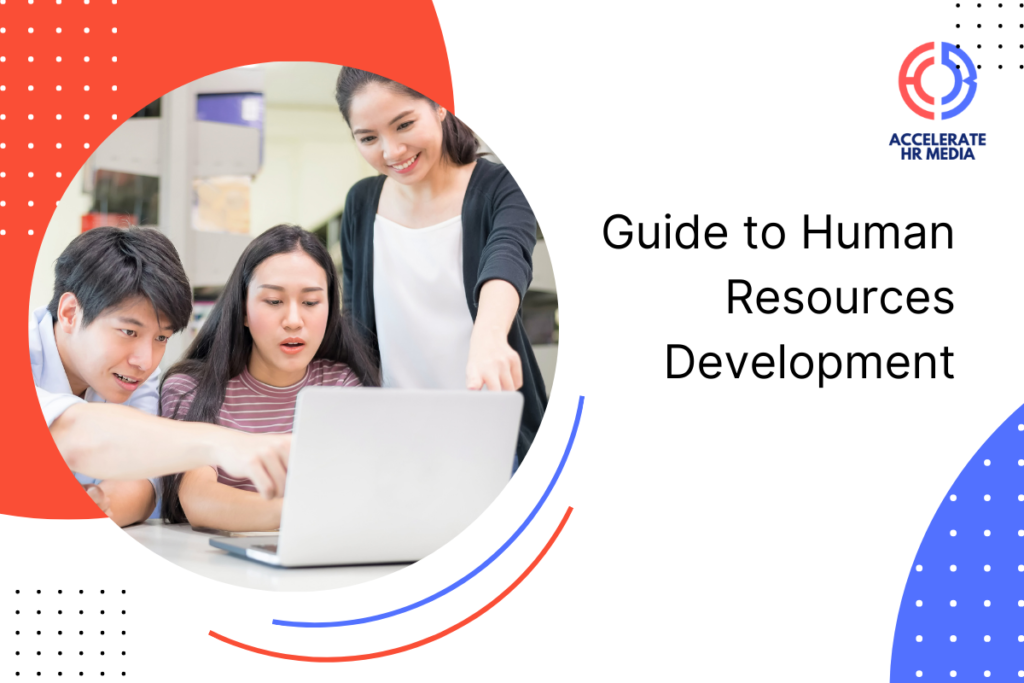
In today’s fast-paced business environment, the need for effective human resources development (HRD) has never been greater. As organizations strive to improve their workforce and adapt to changing market conditions, HRD plays a crucial role in ensuring that employees have the skills and knowledge they need to succeed. This guide will explore the key strategies, trends, and best practices in human resources development, helping you to understand how to foster a productive and engaged workforce.
What is Human Resources Development?
Human resources development refers to a systematic approach to enhancing the skills, knowledge, and abilities of employees within an organization. It involves various activities designed to improve individual and organizational performance. These activities can include training programs, workshops, coaching, and mentoring.The goal of HRD is to create a workforce that is capable of meeting current and future business needs. By investing in employee development, organizations can improve productivity, increase job satisfaction, and reduce turnover rates.
Components of Human Resources Development
HRD consists of several key components:
- Training and Development: This includes formal training programs, workshops, and on-the-job training that help employees learn new skills.
- Career Development: HRD focuses on helping employees plan their career paths and develop the skills needed to advance.
- Organizational Development: This involves improving the overall health of the organization through effective management practices and a positive work culture.
- Performance Improvement: HRD aims to enhance employee performance through feedback, coaching, and performance management systems.
Importance of Human Resources Development
The importance of human resources development cannot be overstated. Here are some key reasons why HRD is vital for organizations:
- Improves Employee Skills: HRD helps employees acquire new skills and knowledge, making them more competent in their roles. This is especially important in a rapidly changing work environment where new technologies and practices emerge regularly.
- Enhances Job Satisfaction: When employees feel that their organization is investing in their development, they are more likely to be satisfied with their jobs and remain loyal to the company. This leads to lower turnover rates and a more stable workforce.
- Increases Productivity: A well-trained workforce is more efficient and productive, leading to better overall performance for the organization. Employees who have the right skills can complete tasks more quickly and with higher quality.
- Supports Organizational Goals: HRD aligns employee development with the organization’s strategic goals, ensuring that the workforce is prepared to meet future challenges. This alignment helps organizations stay competitive in their industries.
- Promotes a Positive Work Culture: Organizations that prioritize HRD foster a culture of learning and growth, which can lead to increased employee engagement and collaboration. A positive work culture attracts top talent and enhances overall employee morale.
Key Strategies for Effective Human Resources Development
To maximize the benefits of human resources development, organizations should implement several key strategies:
Workforce Planning
Workforce planning is the process of analyzing an organization’s current and future staffing needs. This involves identifying the skills and competencies required for various roles and ensuring that the right people are in the right positions. Effective workforce planning helps organizations anticipate changes in the market and prepare for future challenges.
- Assess Current Workforce: Start by evaluating the skills and capabilities of your current employees. Identify any gaps that may exist between the current workforce and future needs.
- Forecast Future Needs: Consider the organization’s goals and objectives. What skills will be needed in the future? How many employees will be required to meet those goals?
- Develop a Plan: Create a workforce plan that outlines how to address skill gaps, recruit new talent, and develop existing employees.
Employee Engagement
Employee engagement refers to the emotional commitment that employees have to their organization. Engaged employees are more likely to be motivated, productive, and willing to go the extra mile. To foster engagement, organizations should create a supportive work environment, encourage open communication, and provide opportunities for professional growth.
- Communicate Openly: Encourage open communication between management and employees. Regularly share updates about the organization’s goals, changes, and successes.
- Recognize Contributions: Acknowledge and reward employees for their hard work and contributions. Recognition can boost morale and encourage continued engagement.
- Provide Growth Opportunities: Offer opportunities for professional development, such as training programs, workshops, and mentorship. Employees are more likely to stay engaged when they see a path for growth within the organization.
Performance Management
Performance management is the ongoing process of evaluating and improving employee performance. This includes setting clear expectations, providing regular feedback, and conducting performance reviews. By implementing effective performance management practices, organizations can identify areas for improvement and support employee development.
- Set Clear Goals: Establish specific, measurable, achievable, relevant, and time-bound (SMART) goals for employees. Clear goals provide direction and motivation.
- Provide Regular Feedback: Offer constructive feedback on a regular basis, not just during annual reviews. Continuous feedback helps employees understand their strengths and areas for improvement.
- Conduct Performance Reviews: Schedule regular performance reviews to assess employee progress and discuss future goals. Use these reviews as an opportunity to identify training needs and development opportunities.
Current Trends in Human Resources Development
As the workplace continues to evolve, several trends are shaping the future of human resources development:
- Emphasis on Continuous Learning: Organizations are increasingly focusing on creating a culture of continuous learning, where employees are encouraged to pursue ongoing education and skill development. This can include online courses, workshops, and certifications.
- Use of Technology: The rise of digital tools and platforms has transformed HRD. Organizations are leveraging technology to deliver training programs, track employee progress, and facilitate communication. Learning management systems (LMS) are becoming popular for delivering training content.
- Personalized Learning Experiences: Tailoring learning experiences to individual employee needs and preferences is becoming more common, allowing for more effective skill development. Personalized training can lead to higher engagement and better retention of knowledge.
- Focus on Diversity and Inclusion: Organizations are recognizing the importance of diversity and inclusion in the workplace. HRD initiatives are now designed to promote an inclusive culture and support diverse talent. This includes training on unconscious bias and creating programs that support underrepresented groups.
- Integration of Soft Skills Training: In addition to technical skills, organizations are placing greater emphasis on developing soft skills, such as communication, teamwork, and problem-solving. These skills are essential for collaboration and effective leadership.
Best Practices in Human Resources Development
To ensure the success of human resources development initiatives, organizations should follow these best practices:
- Conduct Regular Training Needs Assessments: Regularly assess the training needs of employees to ensure that development programs are relevant and effective. Surveys and feedback sessions can help identify areas for improvement.
- Set Clear Goals and Objectives: Establish specific goals for HRD initiatives to measure their effectiveness and align them with organizational objectives. Clear goals help track progress and demonstrate the value of HRD efforts.
- Utilize a Variety of Learning Methods: Incorporate different training methods, such as workshops, e-learning, and on-the-job training, to accommodate different learning styles. A mix of methods can enhance engagement and retention.
- Encourage Feedback and Continuous Improvement: Solicit feedback from employees on training programs and use this information to make improvements. Continuous improvement ensures that HRD initiatives remain relevant and effective.
- Evaluate the Impact of HRD Programs: Regularly assess the effectiveness of HRD initiatives by measuring their impact on employee performance and organizational outcomes. Metrics such as employee retention rates, productivity levels, and employee satisfaction surveys can provide valuable insights.
Conclusion
Human resources development is a critical component of organizational success. By investing in employee development and implementing effective HRD strategies, organizations can enhance workforce skills, improve employee engagement, and achieve their strategic goals.As we move forward, it is essential for organizations to stay informed about the latest trends and best practices in HRD. By doing so, they can create a culture of continuous learning and development that benefits both employees and the organization as a whole.In summary, understanding the importance of human resource strategy, adopting HR best practices, and focusing on workforce planning and performance management will help organizations thrive in an ever-changing business landscape.

